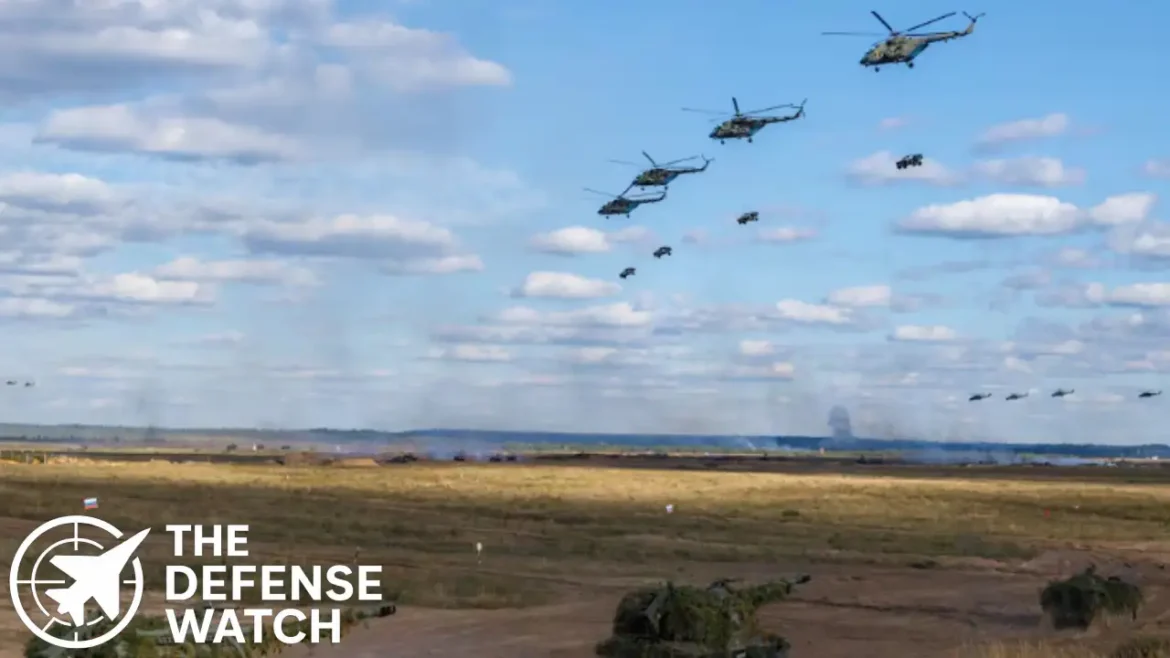Russia and Belarus Begin Zapad 2025 War Games
TALLINN, Estonia — Russia and Belarus have launched large-scale military exercises dubbed Zapad 2025 (“West 2025”), beginning Friday and running through September 16. The drills, which simulate repelling an attack with airstrikes and sabotage, come at a critical moment in Europe’s security landscape.
The exercises are closely watched by NATO and Ukraine, as the last major Zapad drills in 2022 were followed by Russia’s full-scale invasion of Ukraine. This year’s maneuvers again highlight Moscow and Minsk’s close military ties, even as Belarusian President Alexander Lukashenko cautiously signals interest in thawing relations with the West.
Scale and Location of the Drills
Belarus initially announced that 13,000 troops would participate near its western border, but later revised the number to about half that figure. Most activity will occur near Barysaw, roughly 74 kilometers northeast of Minsk, while limited operations are planned close to the borders of Poland and Lithuania.
Western intelligence assessments vary widely, with estimates ranging from 30,000 to as high as 150,000 troops. For comparison, Zapad 2021 saw about 200,000 personnel, according to Russian officials.
Belarus has invited observers from the Organization for Security and Cooperation in Europe (OSCE) and NATO military attachés in Minsk, in an effort to downplay fears of escalation.
Nuclear Dimensions of Zapad 2025
A defining feature of this year’s exercise is its focus on nuclear readiness. Belarusian Defense Minister Viktor Khrenin confirmed that troops will practice planning for the use of Russian nuclear weapons and nuclear-capable intermediate-range missiles.
Belarus formally joined Russia’s nuclear umbrella last year, following a treaty that allows Moscow to deploy tactical nuclear weapons on Belarusian soil. While Belarus claims decision-making, operational control remains firmly in Russian hands.
One system under discussion is the Oreshnik intermediate-range ballistic missile, first used by Russia in Ukraine in late 2024. President Vladimir Putin has promised deployment of the system to Belarus by late 2025.
Experts stress that the drills are focused on command-and-control procedures, not actual nuclear weapon deployment. Still, the presence of Russian tactical nuclear arms in Belarus significantly extends Moscow’s strike options against NATO members in Eastern and Central Europe.
NATO’s Response and Regional Concerns
The exercises have triggered unease across NATO’s eastern flank. Poland’s Prime Minister Donald Tusk labeled Zapad 2025 “very aggressive,” citing drone incursions into Polish airspace this week, some allegedly launched from Belarus. NATO partners assisted in shooting down several of the drones.
The Suwalki Gap — a 65-kilometer land corridor between Poland and Lithuania separating Belarus from Russia’s Kaliningrad exclave — has emerged once again as a focal point. Long viewed as NATO’s most vulnerable choke point, the gap could theoretically be targeted in a conflict scenario to cut off the Baltic states from NATO reinforcements.
Lithuania and Poland will conduct parallel military exercises, while Germany’s Quadriga 2025 drill, already underway, will overlap with Zapad.
Lukashenko Balances Moscow and the West
President Lukashenko, in power for more than 30 years, remains dependent on Russian subsidies and political support. Yet, in recent months, he has sought to soften his image, releasing political prisoners and even speaking by phone with U.S. President Donald Trump.
Analysts note that Lukashenko is presenting himself as a potential mediator, claiming he can temper Moscow’s actions in exchange for partial reintegration with the West. However, Belarus continues to host Russian troops, advanced weapons, and nuclear assets — limiting Minsk’s independence.
Analysis: What Zapad 2025 Means for U.S. and NATO Defense
For U.S. defense planners, Zapad 2025 underscores three critical dynamics:
- Persistent Russian-NATO Tension — Despite heavy losses in Ukraine, Russia continues to stage large-scale war games to demonstrate readiness and deterrence. U.S. European Command (EUCOM) must prepare for rapid reinforcement scenarios along NATO’s eastern border.
- Nuclear Integration with Belarus — The drills highlight Russia’s evolving nuclear doctrine and the risks posed by tactical nuclear deployment in Belarus. For Washington, this complicates missile defense planning and increases pressure on NATO’s nuclear sharing arrangements.
- Hybrid Escalation Risks — Drone incursions into Poland and potential provocations in the Suwalki Gap illustrate how exercises can blur into real-world crises, forcing NATO to balance deterrence with de-escalation.
The Pentagon has long viewed Zapad exercises as both training events and strategic messaging tools. Their timing, scale, and content often signal Moscow’s geopolitical intent. In this case, Zapad 2025 appears less about imminent attack and more about consolidating Belarus as a forward base of Russian power.
Conclusion: Strategic Flashpoint Ahead
Zapad 2025 may not replicate the surprise of 2022, but it marks another escalation in the militarization of Eastern Europe. By integrating Belarus into its nuclear planning and keeping NATO’s borders under pressure, Moscow signals it remains willing to challenge the West despite battlefield strains in Ukraine.
For NATO and U.S. defense strategists, the next week will be a crucial stress test of readiness and deterrence credibility. Whether Zapad 2025 passes as a contained exercise or sparks another crisis will depend on how closely both sides manage the fine line between war games and provocation.


1 comment
[…] tensions between Russia and NATO remain elevated, incidents like the MiG-31 incursion over Estonia are likely to recur. We can […]